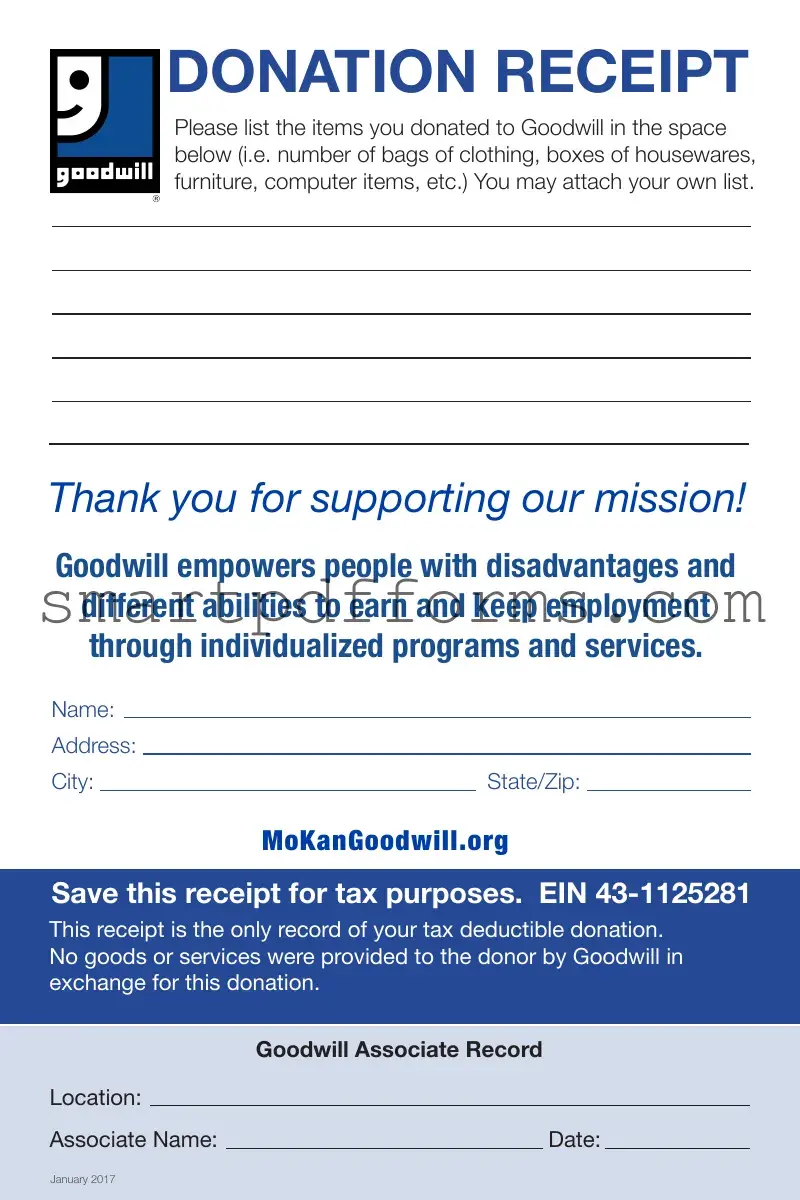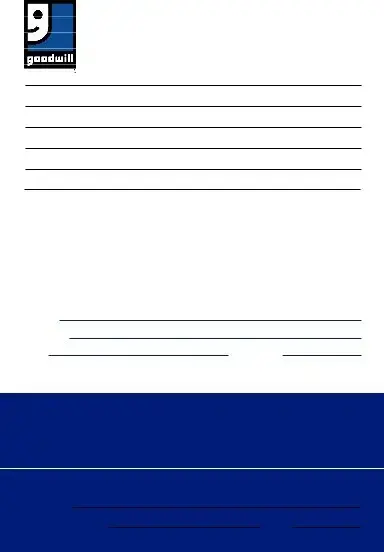Blank For Goodwill Donated Goods PDF Template
The For Goodwill Donated Goods form serves as an official receipt for individuals who donate items to Goodwill, enabling them to list various donated goods such as clothing, housewares, and furniture. This document is crucial for tax deduction purposes, as it is the sole record of the tax-deductible donation made to support Goodwill's mission of empowering those with disadvantages and different abilities. No goods or services were provided to the donor in exchange for their donation, ensuring the purity of each contribution's intent toward aiding Goodwill's impactful programs and services.
Ready to make a difference and possibly benefit from a tax deduction? Ensure you complete the For Goodwill Donated Goods form by clicking the button below.


